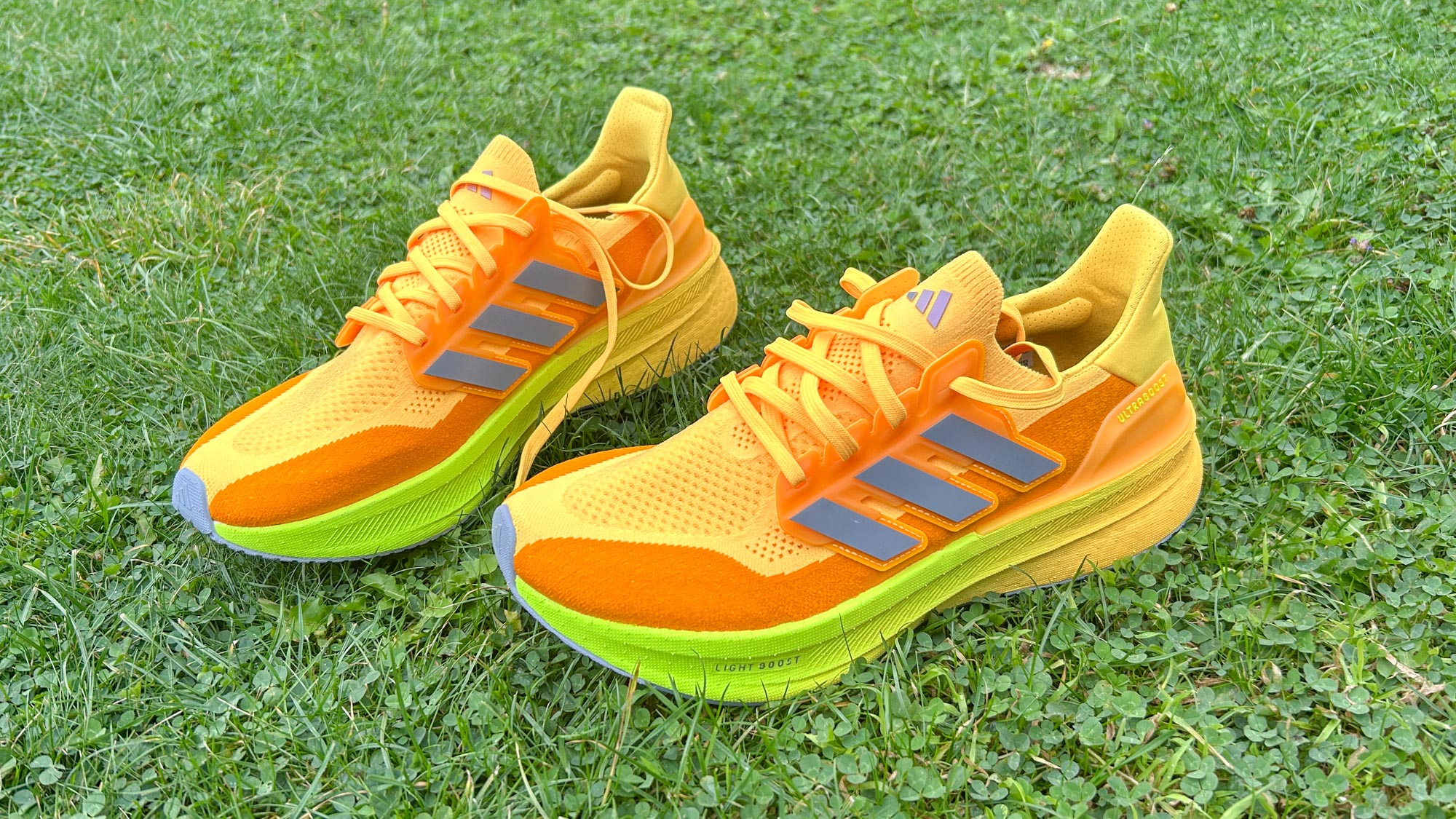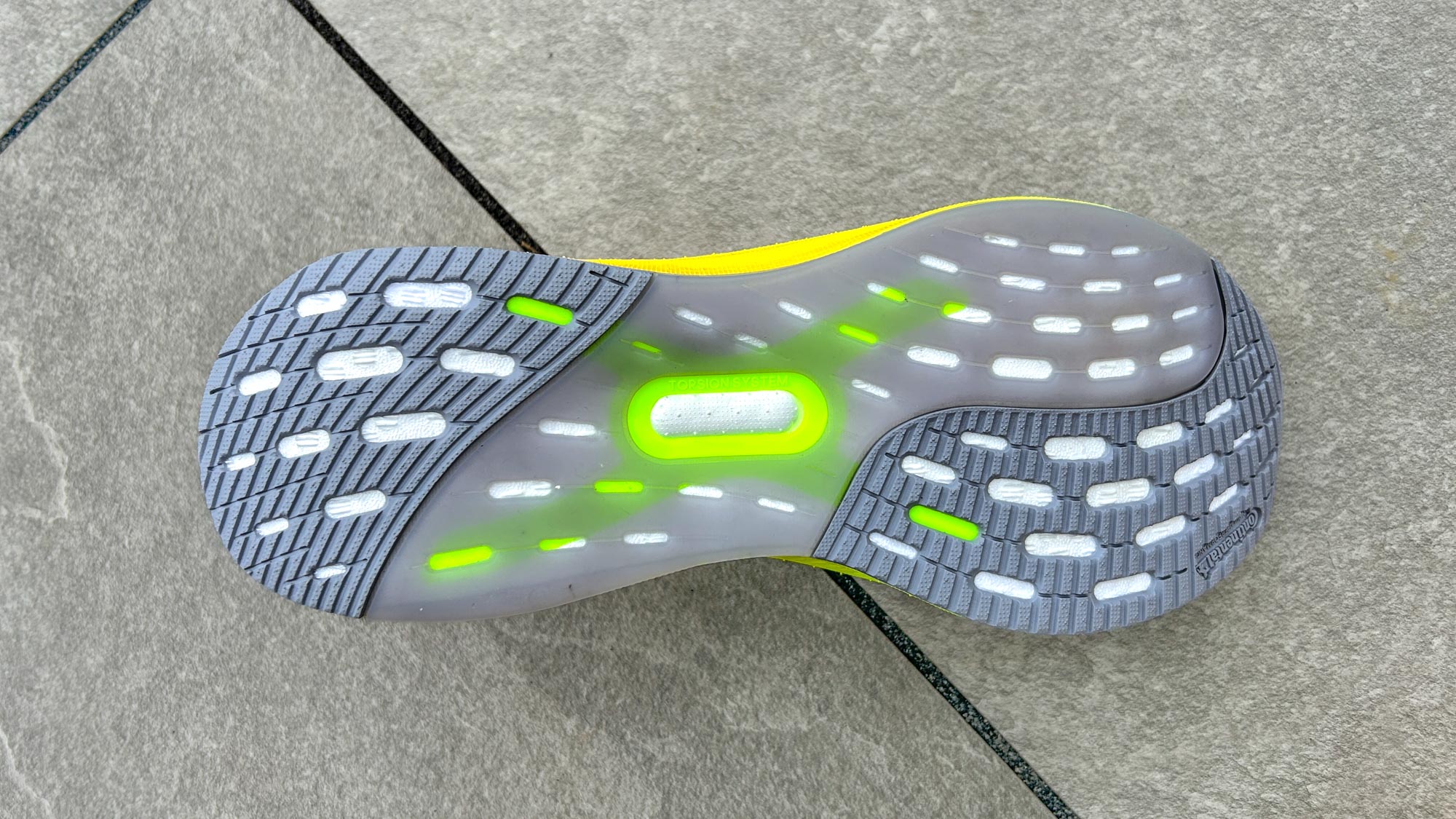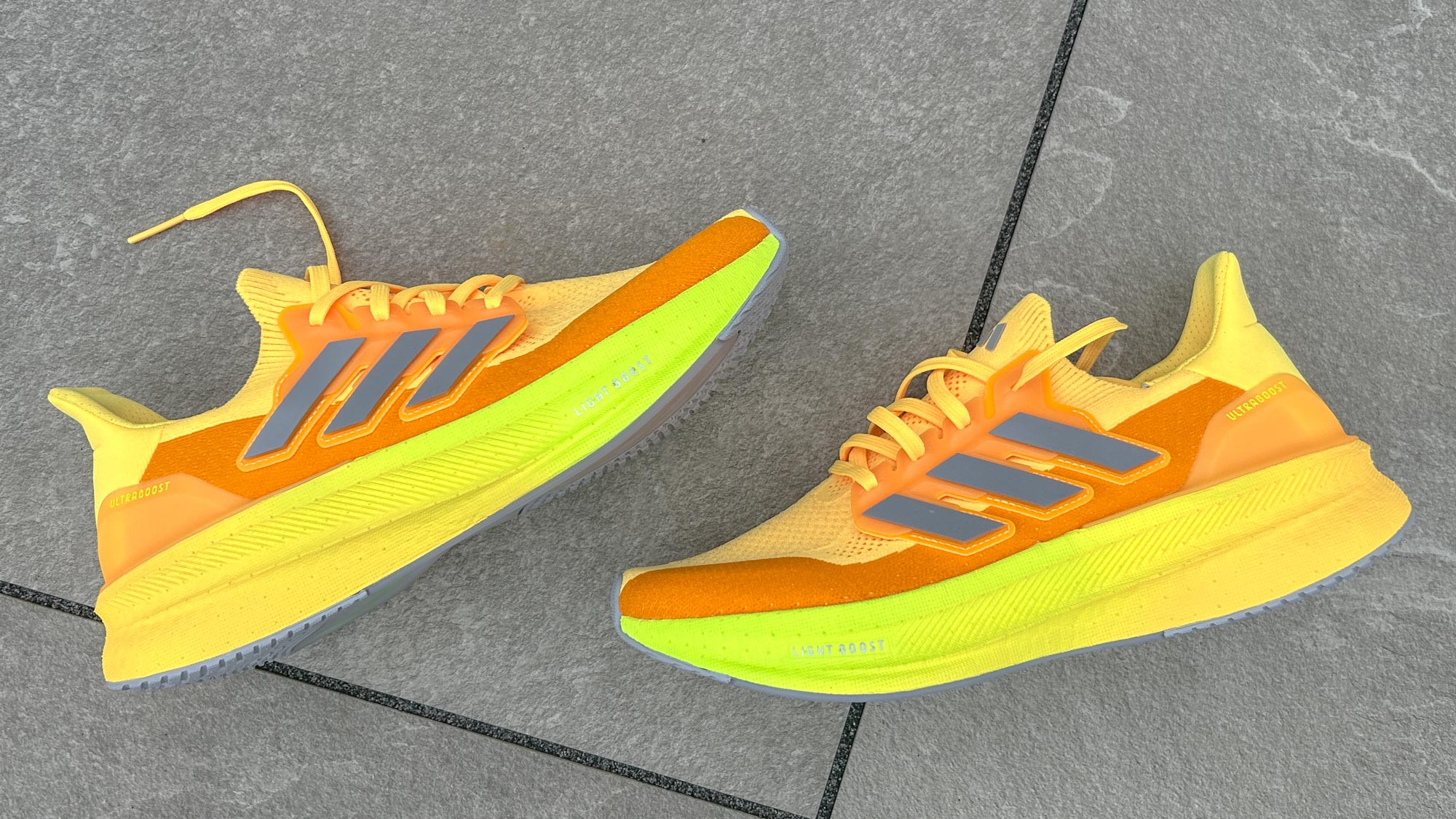Tom's Guide Verdict
I enjoyed running in the Adidas Ultraboost 5 and it remains a standout option for those who want a good-looking shoe for general use as well as running, but there are running shoes that offer more comfort and versatility.
Pros
- +
Increased stack
- +
Smooth ride for easy runs
- +
Stylish design
- +
Great grip
Cons
- -
Not that comfortable on long runs
- -
Not great for faster runs
Why you can trust Tom's Guide
If you want a running shoe that’s stylish enough to wear outside your training as well, the Adidas Ultraboost has always been a strong option, and that remains the case with the Adidas Ultraboost 5. That style is sometimes used as a stick to beat the shoe with, which I’ve never understood — who doesn’t want their running shoes to also look good?
I also found the shoe an improvement on recent models like the Adidas Ultraboost Light and Ultraboost 22 with regards to its performance on the run, with a more comfortable design that’s also lighter.
However, the best running shoes offer more versatility and comfort, and often at a lower price than that of the Ultraboost. Within the Adidas range the Supernova Prima is a more impressive running shoe, and cheaper shoes like the Nike Pegasus 41 and Puma Velocity Nitro 3 offer a better running experience.
In my Adidas Ultraboost 5 review I’ll cover my testing of the shoe and compare it to the best options from other brands.
Adidas Ultraboost 5 review: price and availability
The Adidas Ultraboost 5 launched in July 2024 alongside the Adidas Ultraboost 5X, which is a lighter version of the shoe that doesn’t have the plastic midfoot cage on the 5, and a slightly lower midsole stack. The Ultraboost 5 costs $180 / £160, which is actually $10 / £10 cheaper than the Adidas Ultraboost Light.
Adidas Ultraboost 5 review: design and fit

The Adidas Ultraboost 5 is currently available in seven colors for the men’s and women’s shoe, and there will be many more colors released in the future I’m sure, with it being one of Adidas’s most popular shoes, and I suspect most of them will be nicer than the orange pair I tested, which is a little too bright for my taste.
At 10.4oz in a US size 9.5, it's lighter than past models of the shoe in the same size, including the Adidas Ultraboost Light. That’s despite the fact Adidas has increased the stack height on the Ultraboost 5 to 39mm at the heel and 29mm at the forefoot, keeping the drop at 10mm (the Ultraboost 5X is 38mm at the heel and 28mm at the forefoot, contributing to it being a little lighter than the Ultraboost 5).
I have always found the sock-like fit of the knit upper on the Ultraboost line to fit me well, and that’s true of the Ultraboost 5. The upper holds the foot tightly but comfortably, with the plastic cage on the Ultraboost 5 helping to keep the midfoot locked down when taking turns on the run.
Upper
The Adidas Ultraboost 5 has a Primeknit upper made from a mono-yarn knit. It’s a stretchy and comfortable material, though quite thick around the forefoot and not the most breathable option for runs in hot weather.
There is a plastic midfoot cage on the Ultraboost 5, plus an external plastic heel counter to add stability at the back of the shoe. The high heel collar has a little padding and I found it held my heel comfortably without irritating my Achilles tendon or rubbing at all.
Midsole
The Ultraboost 5 uses the Light Boost foam first seen in the Ultraboost Light, but it has been reworked to be even lighter, and deliver 2% more energy return according to Adidas. There is a plastic torsion system positioned on the bottom of the midsole at the midfoot, which is designed to create a smooth transition from heel to toe on the run.
With 9mm more foam underfoot the Ultraboost 5 should be more comfortable than past models, though Light Boost is not the softest foam compared with the material used in cushioned shoes by other brands. Adidas has moved away from all versions of Boost with some of its running shoes, with the Supernova Prima and Supernova Rise using a lighter, springier material called Dreamstrike+.
Outsole

As with past models of the shoe, the outsole on the Ultraboost 5 is made from Continental rubber, which is durable and delivers reliable grip in all conditions on the road. I’ve used the Ultraboost 5 and older versions of the shoe for many runs on wet sidewalks and the Continental outsole always provides good traction.
Adidas Ultraboost 5 review: running performance
The Adidas Ultraboost 5 feels lighter and smoother on the run than the Ultraboost Light. Ticking along at an easy pace felt natural in the shoe, and despite it having a high stack of foam in the midsole it didn’t feel like a very big shoe during my runs.
When landing at the heel the large stack of foam underfoot is comfortable, and the slight rocker on the shoe and the torsion system helps to move you onto your forefoot. The foam under the forefoot is thinner and you get a bit more feel for the ground there, and the transition has a little more snap to it than with more rockered or lower drop shoes like the Saucony Hurricane 24.

I found the shoe comfortable for easy runs up to around seven or eight miles, at which point I felt the firm feel of the Light Boost foam started to wear a little. I also found this when using the shoe for a recovery run after a track session; it’s not as soft and comfortable as many highly cushioned shoes, like the Brooks Glycerin 21 or Saucony Triumph 22.
It’s also not a particularly versatile shoe. The foam doesn’t give a lot back when running fast, with the forefoot feeling quite dull in particular, and despite losing weight the Ultraboost 5 is still not a very light shoe. I could do short intervals in the shoe fine but for longer reps or tempo runs it’s not a great option.
I found that the Ultraboost 5 was stable despite its high stack of foam, partly because the midsole material is quite firm, and the bootie upper held my foot securely in place. It’s a great shoe for walking around in as well as running, and comfortable to wear all day.
Should you buy the Adidas Ultraboost 5?
If you’re just looking for one of the best running shoes, the Adidas Ultraboost 5 is not the one to get. I’d look at the Adidas Supernova Prima in Adidas’s range, or the Nike Pegasus 41, Puma Velocity Nitro 3 or Saucony Hurricane 24 as better cushioned daily trainers, most of which are a bit cheaper as well.
However, if you want a good-looking shoe for general use and easy runs that usually top out at around eight to 10 miles, then the Ultraboost 5 will serve you well. I don’t mean to be disparaging at all when I say that — many people might not want to spend a lot of money on a shoe they only use for running, and the Ultraboost 5 is a durable and comfortable lifestyle shoe that’s also good for running.

Nick Harris-Fry is an experienced health and fitness journalist, writing professionally since 2012. He spent nine years working on the Coach magazine and website before moving to the fitness team at Tom’s Guide in 2024. Nick is a keen runner and also the founder of YouTube channel The Run Testers, which specialises in reviewing running shoes, watches, headphones and other gear.
Nick ran his first marathon in 2016 after six weeks of training for a magazine feature and subsequently became obsessed with the sport. He now has PBs of 2hr 27min for the marathon and 15min 30sec for 5K, and has run 13 marathons in total, as well as a 50-mile ultramarathon. Nick is also a qualified Run Leader in the UK.
Nick is an established expert in the health and fitness area and along with writing for many publications, including Live Science, Expert Reviews, Wareable, Coach and Get Sweat Go, he has been quoted on The Guardian and The Independent.

